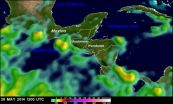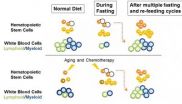(Press-News.org) In a collaboration between RIKEN's Brain Science Institute and Center for Life Science Technologies in Japan, scientists combined cutting edge methods to obtain a comprehensive catalogue of proteins that are manufactured in specific parts of Purkinje neurons.
The study, headed by Drs. Thomas Launey, Unit Leader at RIKEN BSI and Charles Plessy, Unit Leader at RIKEN CLST, succeeded in identifying several thousand RNAs that are enriched in rat Purkinje neurons. This comprehensive list holds the key to a better understanding of molecular events within these neurons and potential insights into diseases associated with Purkinje cells, like ataxias (disorders affecting movement) and autism.
"Purkinje neurons, remain one of most mysterious type of brain cell, receiving 10 times more connections than any other neuron and possessing structural characteristics that are unique among neurons," said Dr. Launey. These large neurons have a distinctive shape with extensively branched extensions called dendrites, which receive signals, and a single axon for sending signals to other neurons. Unlike other inhibitory neurons that act locally on their neighbors, the Purkinje cells shut off neurons that are located outside of the cerebellar cortex.
Drs. Anton Kratz and Pascal Beguin, the study's co-first authors, and colleagues identified not only what proteins distinguish Purkinje cells from other neurons, but also what proteins are made directly in the dendrites. Isolating the dendrites and examining their contents is challenging, and the researchers accomplished this technical feat using sophisticated methods.
Although all cells of the body have the same DNA, they make different proteins, which give them unique properties, depending on what parts of the genome are active. To make the proteins, messenger RNA (mRNA) carries information encoded in genes from the nucleus to the ribosomes, the protein-building machinery in the cytoplasm. By combining two high-throughput methods known as TRAP (Translating Ribosomal Affinity Purification) and CAGEscan (Cap Analysis of Gene Expression, developed at RIKEN), researchers could specifically capture and identify the mRNAs as they were being translated into proteins by ribosomes, in rat Purkinje neurons.
The TRAP method introduces a tag into the ribosome and the researchers used biochemical methods to purify the tagged ribosomes with the bound mRNA specifically from Purkinje cells, revealing what proteins are being manufactured. CAGEscan then allowed them to quickly sequence and identify the huge number of trapped mRNAs. Using microdissection to separate the cell body from the tree-like dendrites allowed the researchers to identify the proteins unique to each compartment. They found that there are many different kinds of proteins manufactured specifically in the dendrites that were distinct from the cell body.
This near-exhaustive survey of the molecular landscape allowed the researchers to find novel identifiers of Purkinje neurons and previously unknown mRNAs. "The introduction of new methods gave us access to mRNAs that are often difficult to detect, especially those that are in low abundance, but are functionally important, such as membrane receptors, transporters and ion channels," said Dr. Launey.
The methods used in this study should be widely applicable to other neuron types and other mammals, including primates, paving the way for comparative studies that may reveal the origins of complex cognitive abilities or the causal defects in diseases affecting the brain.
INFORMATION: END
Cutting edge methods reveal what makes Purkinje neurons unique
2014-06-05
ELSE PRESS RELEASES FROM THIS DATE:
Restoring trust in VA health care
2014-06-05
(SACRAMENTO, Calif.) — In the wake of recent revelations of overly long patient wait times and systematic manipulation and falsification of reported wait-time data, UC Davis and Harvard public policy leaders believe the Department of Veterans Affairs (VA) health-care system's problems can be fixed by strong leadership, greater transparency and reforms that refocus the organization on its primary mission of providing timely access to consistently high-quality care.
In their Perspective article, published online June 4 in the New England Journal of Medicine, authors Kenneth ...
NASA sees remnants of Tropical Storm Boris merging with Gulf low
2014-06-05
VIDEO:
TRMM satellite data showed that some areas in southwestern Mexico received over 12 inches of rainfall (red) from Boris, while System 90L on the eastern side of Mexico brought similar...
Click here for more information.
The remnants of former Tropical Storm Boris moved over southern Mexico and NASA and NOAA satellite data showed that they were merging with a low pressure area in the southwestern Gulf of Mexico. In addition, data from NASA's TRMM satellite was used to compile ...
New therapy for pancreatic cancer patients shows promising results
2014-06-05
SCOTTSDALE, Ariz. — June 5, 2014 — A clinical trial conducted by researchers at the Virginia G. Piper Cancer Center Clinical Trials, a partnership between Scottsdale Healthcare and the Translational Genomics Research Institute (TGen), showed that a new drug called MM-398, given in combination with 5-flourouracil (5FU) and leucovorin, produced a significant overall survival rate in patients with advanced, previously-treated pancreatic cancer.
The NAPOLI-1 (NAnoliPOsomaL Irinotecan) Phase 3 study — a final confirmation of a drug's safety and effectiveness — was conducted ...
Team finds on-off switch to burning stored fat
2014-06-05
SAN ANTONIO, Texas (June 5, 2014) — Scientists this week reported that a molecular pathway called mTORC1 controls the conversion of unhealthy white fat into beige fat, an appealing target for increasing energy expenditure and reducing obesity. The team, led by researchers from the School of Medicine at The University of Texas Health Science Center at San Antonio, also found that a protein, Grb10, serves as the on-off switch for mTORC1 signaling and the "beigeing" of fat.
The finding could inform development of novel diabetes and obesity drugs, the scientists said. The ...
How do phytoplankton survive a scarcity of a critical nutrient?
2014-06-05
Phytoplankton—tiny, photosynthetic organisms—are essential to life on Earth, supplying us with roughly half the oxygen we breathe. Like all other life forms, phytoplankton require the element phosphorus to carry out critical cellular activity, but in some parts of the world's ocean, P is in limited supply. How do phytoplankton survive when phosphorus is difficult to find?
Phytoplankton can alter their biochemical make-up according to the availability of nutrients in the water. When phosphorus (P) is particularly abundant in the water, phytoplankton produce and store ...
Stimulating a protein in skin cells could improve psoriasis symptoms
2014-06-05
Psoriasis is a common, long-lasting disease that causes itchy or sore patches of thick, red skin with silvery scales. Environmental contaminants can trigger psoriasis and other autoimmune disorders, and it is thought that a protein called the aryl hydrocarbon receptor (AhR), which senses environmental toxins, could play a role. A study published by Cell Press on June 5 in the journal Immunity shows that the severity of inflammation associated with psoriasis is unexpectedly suppressed by AhR. The findings suggest that stimulation of AhR could improve symptoms and may represent ...
Neurons transplanted into Parkinson's-affected brains appear healthy after 14 years
2014-06-05
When transplanted into the midbrains of adult patients with Parkinson's disease, dopamine neurons derived from fetal tissue can remain healthy for many years. The findings reported in the Cell Press journal Cell Reports on June 5th suggest that transplanted neurons don't degenerate over time as some had suggested and feared they would, which provides further rationale for pursuing stem cells as a source for transplant-ready dopamine neurons, according to the researchers.
"Our findings show a robust expression of dopamine transporters and a lack of abnormal mitochondrial ...
Activating the immune system could treat obesity and diabetes
2014-06-05
Obesity is a worldwide epidemic that is causing alarming rates of diabetes and cardiovascular disease, but currently there is a lack of effective drug treatments. Two unrelated studies published by Cell Press June 5th in the journal Cell reveal an important role for immune pathways in activating good types body fat, called brown and beige fat, which burn stored calories, reduce weight, and improve metabolic health. The findings could pave the way for much-needed treatments for obesity and related metabolic diseases.
"The idea that metabolic health can be improved by activation ...
Fasting may help protect against immune-related effects of chemotherapy and aging
2014-06-05
While chemotherapy can save lives, it can also cause many side effects, including the depletion of immune cells. Also, even in the absence of chemotherapy, normal aging takes a heavy toll on the immune system, leading to immune deficiencies and a higher risk of developing leukemia and a variety of malignancies with age. Now researchers reporting in the June 5th issue of the Cell Press journal Cell Stem Cell have found that a simple dietary intervention—periodic fasting—may combat both chemotherapy-induced and aging-related changes in immune cell function by replenishing ...
Outcomes of a 2-year national rare disease gene discovery project
2014-06-05
OTTAWA, ON – June 5, 2014 – As part of the Finding of Rare Disease Genes (FORGE) research project, Canadian researchers have developed an expertise in understanding the underlying biology of rare childhood disorders. The first public commentary of this nationwide study is available today in the American Journal of Human Genetics.
"When we launched this project, we predicted we might explain, or solve, 50 disorders; we've almost tripled that goal," said Dr. Kym Boycott, lead investigator of FORGE and clinician scientist at the Children's Hospital of Eastern Ontario ...



